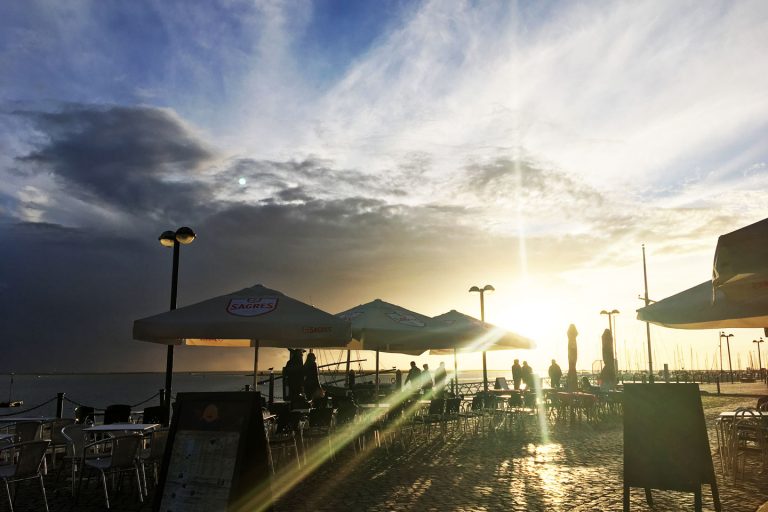Why the Eastern Algarve?
So here I am, a middle-aged bloke living in the Eastern Algarve, and I have no idea what I’m doing.
Which is why I’ve decided to write this blog – to discover more about what the area has to offer, and what I need to do to get by.
The first question I have to answer I suppose is: what is it about the Eastern Algarve that attracted me?
Maybe it was the long sandy beaches that stretch as far as the eye can see?
Or the Ria Formosa, with its abundance of wildlife?
Perhaps it was the barrier islands, with their quaint fishing villages?
Or maybe the numerous activities available: walking, cycling, kayaking, fishing, kite-surfing, bird-watching, horse-riding, golf…?
Was it the sleepy towns and villages?
Or the numerous historical sites?
Maybe it was the many bars and restaurants?
Or the glorious seafood and the to-die-for pastries?
Was it the stunning wines?
Was it perhaps my desire to sit in the sun with a cold beer and watch the world go by?
Perhaps it was simply the fact that it was totally different to what people expect on the Algarve.
I think it was all of this…
From the beauty of the old town in Faro, to the grittiness and cubist architecture of Olhao…
From the charm and seclusion of the beaches on the barrier islands of the Ria Formosa, to the vibrancy of the many fresh food markets on the Eastern Algarve…
From the sleepiness of Fuseta, to the hustle and bustle of Tavira and its Roman bridge…
From the divine Octopus dishes of Santa Luzia, to the Tapas bars of Ayamonte in Spain, just across the Guadiana from Vila Real de Santo Antonio…
From the greens of Monte Rei Golf Club to the busy boardwalks and beaches of Monte Gordo…
From the wonderfully diverse terrain of the Ecovia Litoral, to the dolphins of the Atlantic Ocean…
From the Moorish fishing village of Cacela Velha to the Medieval Castle of Castro Marim…
I think that says it all – I just love the variety of the Eastern Algarve.
Its name: The Algarve
So where did the Algarve get its name?
After the Moors conquered the area which is now the south of Portugal in 716, many Moorish words were assimilated into the Portuguese language, and this included place names.
The Moors named the area ‘al-gharb’, meaning ‘the West’, since it was the most westerly part of their empire. Hence the current name, ‘The Algarve’
It’s not only the place that owes thanks to the Moors for its name:
Faro was originally called Santa Maria, and then renamed Faraon by the Moors – meaning ‘the settlement of the Knights’, and Tavira takes its name from the word Tabira, meaning ‘Hidden’
The Moorish influence can be found throughout the area.
The History of the Eastern Algarve
So where does the history of the Eastern Algarve begin?
Well if we start with the Algarve as a whole, some believe that its history goes back much further than that and that Silves could be the legendary lost ‘City of Atlantis’. True or not? Who knows…
What we do know is that the Conii arrived first, followed by the Phoenicians some 3000 years ago. They were followed by the Carthaginians, and then the Romans in the 1st Century BC.
The Romans brought roads and architecture, aqueducts, plumbing, Vineyards for wine. They also brought Christianity and Latin – from which the Portuguese language has evolved. Roman remains can be found all over the Eastern Algarve. In particular:
| There are the Milreu ruins in Estoi: here are the remains of a Roman villa from the 3rd century, with mosaics, a colonnade, baths and a temple. |
| The Calcadinha in Sao Bras de Alportel: a 1500m long Roman road. |
| The Ponte Romana in Tavira: the Roman bridge. |
| And the Museu Municipal de Faro: where you’ll find some superb examples of Roman mosaics |
Next came the Visigoths, followed by the Moors in 711AD.
The Moors ruled for five centuries until 1250, introducing new tree varieties (orange trees, almond trees, pomegranate trees, carob trees, and fig trees). The traditional flat-roofed houses were introduced by the moors (for drying the fruits from these trees), as were the latticed chimneys you can see on so many houses today. The Moors also introduced certain place names and words into the Portuguese language.
In the 12th Century began the Reconquista – the resurgence of Christianity over Islam – with a Catholic country being created in the north of Portugal, and the Moors slowly being pushed south. But only in the 13th Century did the Portuguese retain the area for good. Christianity thrived once again, and mosques were turned into churches.
Then came the Age of Discoveries. Portugal began to flex its muscles, against Castille in the East, and against Islam. In 1415, led by Henry the Navigator, they took the important fortress city of Ceuta in Morocco. He then went on to discover various islands in the Atlantic (Madeira, the Azores, Cape Verde).
Next was the truly Golden Age.
| Bartolomeu Dias rounded the Cape of Good Hope. |
| Vasco da Gama discovered the route to India. |
| Pedro Alves discovered Brazil. |
By the 15th Century, Portugal controlled trade with Africa, Asia and Brazil and was the largest trade empire in the world.
But it wasn’t to last.
In 1578, the Portuguese lost a major battle at Alacer Quibir, and Spain took the Portuguese throne. The Portuguese empire fell apart.
In 1640, the Portuguese rebelled against their Spanish masters, leading to the Portuguese Restoration War, which lasted until 1668. Fortresses were built to defend against Spain. Examples can still be seen in Castro Marim and Alcoutim.
In 1755 came the Great Earthquake. It almost completely destroyed Lisbon, but also impacted on the Algarve via a huge Tsunami, although Faro was saved by the protective barrier islands of the Ria Formosa, and subsequently became the capital of the Algarve. But the earthquake led to a period of economic decline
For a brief time (1807-14), Portugal was occupied by the French during the Peninsular Wars, eventually freed by a joint Anglo-Portuguese force led by Lieutenant-General Sir Arthur Wellesley, later to be the Duke of Wellington.
It was slightly different in Olhao on the Eastern Algarve.
In 1808 began one of the few uprisings against the French (on June 16 and still celebrated today with processions through the streets) which led to the French being pushed out of Olhao and subsequently the Algarve.
A month later, a small group of 17 men embarked to Brazil on a caique (a small sailing vessel) named Bom Sucesso (a replica of which can be seen on the waterfront in Olhao) to tell the exiled King of Portugal about their success. This led to Olhao being given a Regal Charter, ordering that it be known as Vila de Olhão da Restauração.
The 20th Century was a period of stagnation, with the Monarchy being deposed in 1910, and a military coup in 1926 following years of corruption, repression and near bankruptcy.
This military dictatorship lasted until 1974, when another coup restored democracy. All of Portugal’s African colonies were subsequently granted independence.
Since then, the bedrock of the Algarvian economy, fishing and canning, has been supplemented by tourism.
Travel in the Eastern Algarve:
Airport:
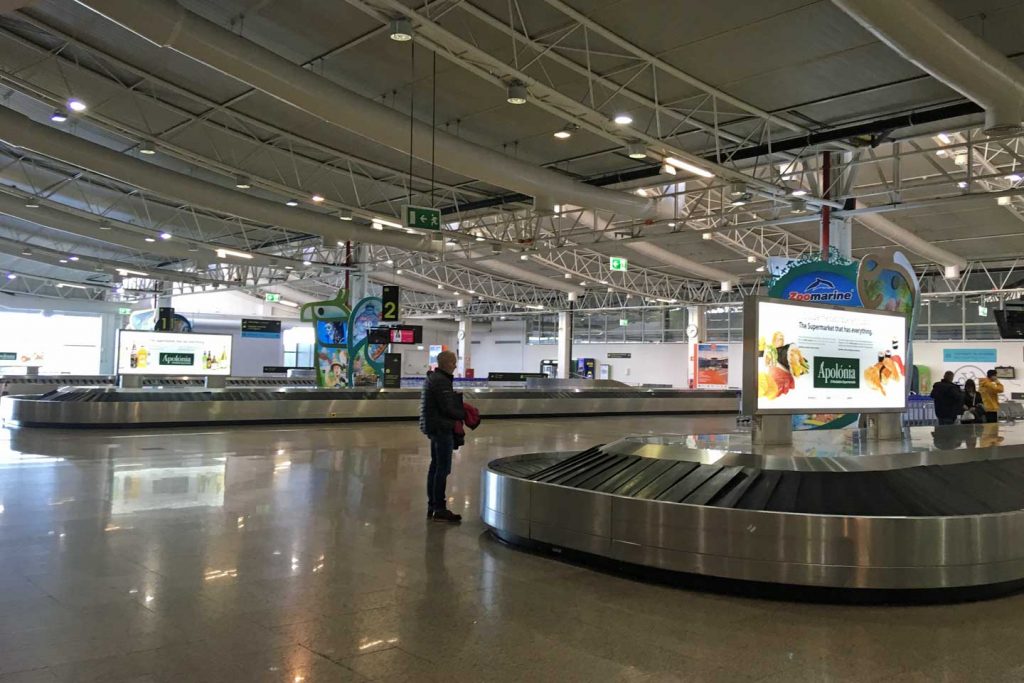
The gateway to the Algarve is Faro Airport.
The flights are fairly regular from the UK (although they dip in the off-season), and as a whole, every time I’ve flown, it’s gone like clockwork.
When I return to the UK to see family, I usually fly to Luton, and the quickest I’ve done it is 5.5 hours door-to-door.
I tend to fly with Easyjet: quick, efficient and not a rip-off.
If you fly at the right time of year, or book early enough (get on the Easyjet email list to learn when flights are released) then it really doesn’t cost much.
I’m flying home shortly and the taxi at each end is going to cost me more than the flight. I certainly don’t feel cut off from friends and family back in the UK with that sort of service.
Parking at the Airport is easy and, compared with other airports I’ve parked at, inexpensive.
An alternative is Go Park. You drop your car with them, they then drive you to the airport, and pick you up again on your return and charge only €3 a day. I haven’t used this myself, but I’ve heard good things about it and used Andy (who runs the business) for other services he offers.
There are a number of car hire companies at the airport. Ensure that you pre-book online, especially in high season! Read the Terms and conditions, and if you intend going on the toll roads, ensure the car has a transponder to allow for this, so that the tolls are paid automatically.
There is a Taxi rank outside the Arrivals lounge. It’s quick and easy. More practical but probably not as cost-effective as some of the other options.
You can also organise a transfer. It’s probably best to do so before travelling.
There is no train service direct from the airport, although the Portuguese aim to have a train link by 2022. To use the Algarve train service, you will need to either catch a bus to Faro Bus Station (No 16 – €2.30) and walk the 300 meters to the Train Station, or take a taxi (approx. cost €9.40)
Address: Faro Airport, 8001-701 Faro, PORTUGAL
Phone: +351 289 800 800, Email: faro.airport@ana.pt
Lost and Found Office, Phone: +351 289-800-688
Trains:
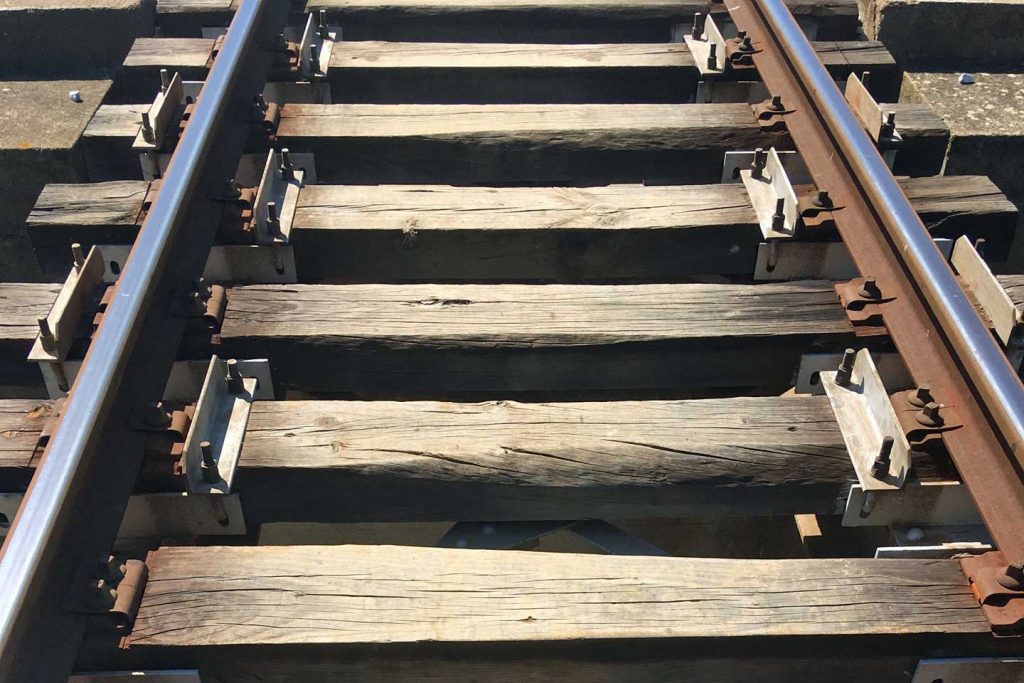
In the Eastern Algarve there is a single train line, stretching from Faro in the West to Vila Real de Santo Antonio in the East, using the following stations:
Faro
Bom Joao
Olhao
Fuseta-A
Fuseta and Moncarapacho
Livramento
Luz de Tavira
Tavira
Porta Nova
Conceicao
Cacela
Castro Marim
Monte Gordo
Vila Real de Santo Antonio
The service is inexpensive and half price for children and adults of pension age (ID required).
It’s fairly regular, but at times there can be a gap of a couple of hours between trains.
Payment can be made at the station, but often in the smaller towns, these will not be manned.
It is acceptable to make payment to the guard on the train, but only cash is allowed, and small denominations appreciated.
The first trains are as follows:
| From Faro | 07:50 |
| From Vila Real de Santo Antonio | 05:48 |
The last trains are as follows:
| From Faro | 22:12 |
| From Vila Real de Santo Antonio | 20:44 |
Buses:
The Eastern Algarve has an extensive but limited bus service. I know that sounds strange, but let me explain.
I find the service extends to most towns and villages. But I also find that some routes don’t run very often, some journeys require more than one bus (eg Faro Airport to Fuseta requires three buses), and the service stops relatively early in the evening – especially so on weekends and holidays.
So personally, I haven’t used it much.
Some things I’ve noticed though:
| Paragem is the Portuguese word for Bus-stop |
| Bus-stops are request stops |
| Bus-stops rarely have timetables – make sure that you know bus times, or have access to online information |
| Buses don’t use numbers on the whole – the name of the destination is what you look for |
| Large towns (eg Olhao, Tavira, Vila Real de Santo Antonio) have bus stations where you can find information and buy tickets. |
| When purchasing a ticket on boarding a bus, only cash is allowed for payment – unless you have a prepaid smart card |
| Prepaid smart cards are available from bus stations for journeys between the same two towns/villages |
| A Tourist ticket allows unlimited travel for 3 or 7 days – available from bus stations (a different ticket allows unlimited travel for a day on Proximo buses) |
Click here for details of services available with EVA Buses (a regional bus service, that also extends to Seville)
Click here for details of services available with Rede Expressos Buses (a national service, linking major urban areas eg Faro to Lisbon)
And Click here for services available around Faro (a local service in Faro)
(Nb Public Holidays are held on the date associated with them, not on the nearest Monday as is often the case in the UK – public transport is greatly reduced on Public Holidays)
Taxis:
Taxis are black with a green roof and metered: approx. €3.30 for the first 1.8km, and then €1 for each subsequent kilometre.
Most major towns have taxi ranks. For example, Faro has a taxi rank by the Railway station, Olhao has one in the main ‘Avenida’.
Some of the smaller towns don’t, and you will need to phone a taxi to get a lift. Most restaurants or bars should be able to help if you ask – I recommend buying a drink or a meal first though!
It’s not the cheapest, but it is the quickest and most convenient way to travel around the Algarve if you don’t have a car.
Cuisine of the Eastern Algarve:
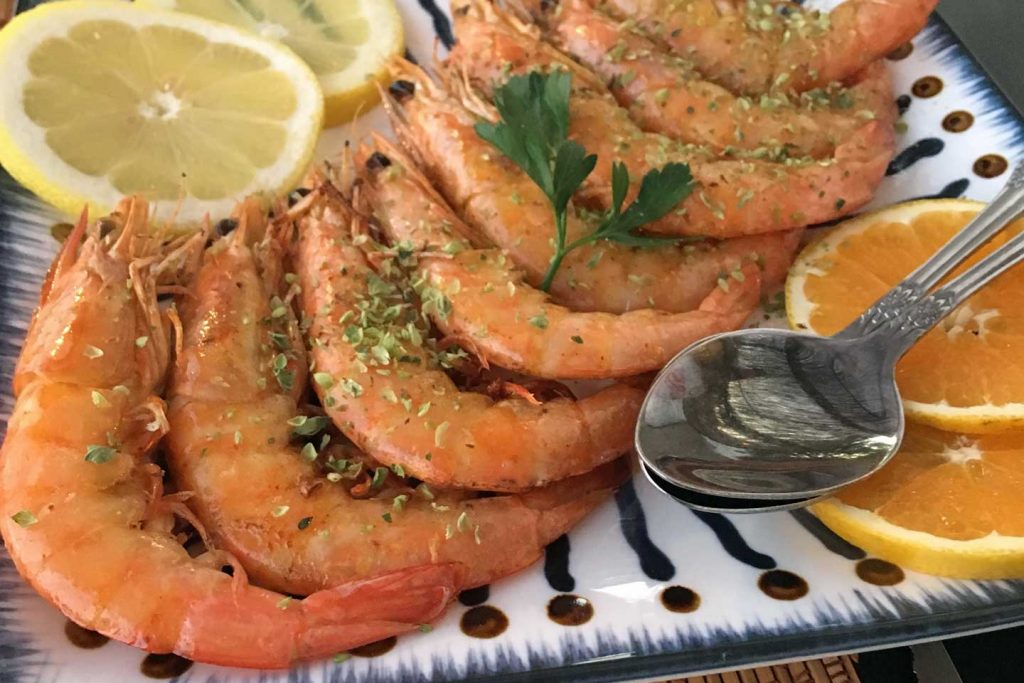
When you think of food on the Eastern Algarve, you think of fresh fish and fresh seafood, obviously – the Algarve is inextricably linked with the sea. But there’s also fantastic fresh meat, and fresh fruit and veg…
Head down to one of the Mercados (fresh food markets) in the Eastern Algarve and this is what you’ll find, along with the locals picking and choosing what they want to eat that night.
There’s an old lady who lives next door to me. She can hardly walk and hardly see, and we can’t speak to each other – to my shame I haven’t learned the language as yet,
But that doesn’t stop her from making me feel welcome.
Occasionally she’ll bang on my door and beckon me into her kitchen, where she’ll have a steaming ‘caldo verde’ (Portuguese cabbage soup) on the hob.
Cabbage never tasted so good! Mixed with onions and garlic, potatoes and chorizo, salt and pepper to taste… all purchased from the Mercado 50 metres away from her front door. It’s stunning, and just one of the many dishes you’ll find in this area.
My personal favourite though is as simple as fresh fish, heavily salted and cooked on coals.
Whether it’s sardinhas (sardines), robalo (sea bass), dourada (sea bream) or espadarte (swordfish), I don’t really care.
I also enjoy a trip to Santa Luzia, the Polvo (Octopus) capital of the Algarve, or a ferry ride out to the Ilha da Armona for a plate of Porco e Ameijoas (Pork and Clams) at Tolinhas.
And another favourite is an Espetada de Camarao (prawns on a spectacular skewer) or an Espetada de porco preto (black pork) from Nuno’s in Fuseta.
It doesn’t matter where you go in the Eastern Algarve – the food is simple but very tasty.
There’s nothing too spicy, which is surprising since, during the Golden Age of Portugal, Portuguese adventurers were the first to bring spices back to Europe, such as pepper and curry (as well as paprika, ginger, coriander etc).
But everything is tasty.
Try the bacalhau (cod) or the choco (cuttlefish). Try the lula (squid), the cavala (mackerel) or the atum (tuna). Try the arroz de mariscos (seafood rice).
Try a stew: either a feijoada (bean stew) and a caldeirada (fish stew) would be a great choice.
Try the Cataplana Marisco, a seafood mix cooked in a clam-shaped copper pan of Arab origin, called a Cataplana), which like a tagine, retains the full taste and aroma of the food within.
In fact, if you really enjoy your seafood, why not go to the Festival do Marisco, held every August in Olhao. Here you can try the best of East Algarvian seafood. The festival is held over 6 nights, with live music, drink and, of course, seafood – lots and lots of seafood! The lagosta (lobster) was stunning!
But it’s not just about the main courses. Restaurants will always offer you something to nibble on when you first arrive – bread and pate, olives, and carrots cooked in garlic and olive oil.
Starters are normally soups (sopa de legumes, caldo verde etc) or a plate of coquilhas (small clams)
And once you’ve had your main course, you’ll find there’s an abundance of pastries and desserts – also available at the many Pastelarias (pastry cafes) throughout the region. Pastel de Nata is probably the most famous – simply a delightful custard tart!
The locals certainly know how to make the most of the fig, orange, almond and carob trees that are rife in the Eastern Algarve, as well as the plentiful honey.
Smaller cafes and bars will also offer food: a Tosta Mista (ham and cheese toastie), a bifana (pork sandwich), a prego (steak sandwich) pasteis de bacalhau (cod fritters) or empadas (meat pasties). You could even try caracois (snails) between May and July,
Where ever you go in the region, you’ll find simple yet delightful food.
Enjoy yourself!
Animals and Plants on the Eastern Algarve
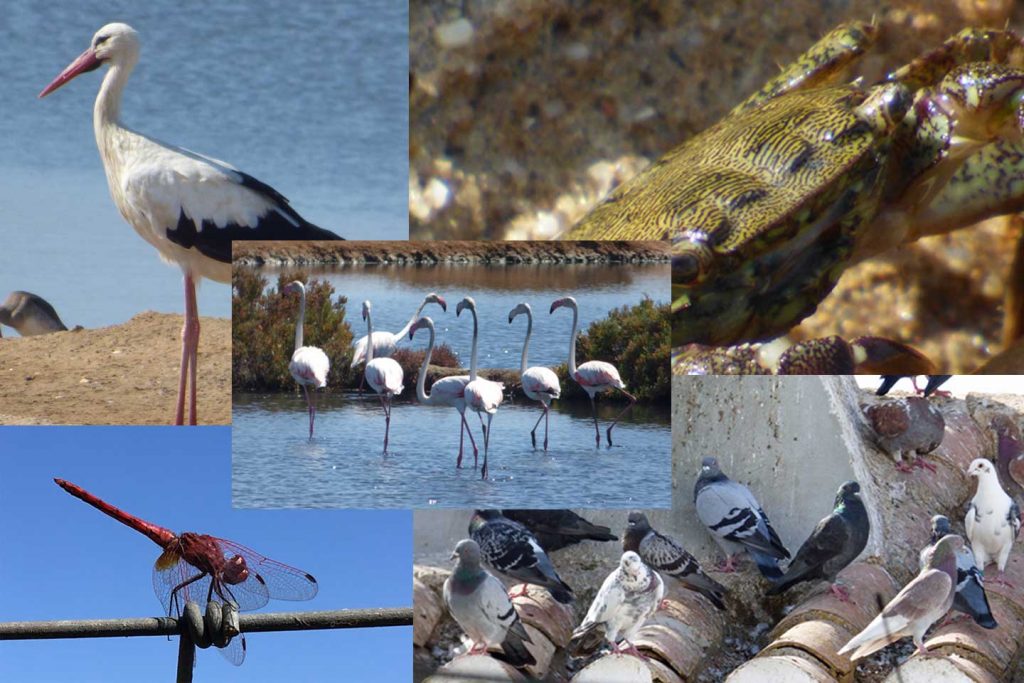
I like to walk.
I especially like to walk here in the Eastern Algarve – through the Ria Formosa Natural Park that stretches from Faro to Cacela Velha.
A great time to walk is in the spring when the rivers are full and the flora is springing into life, but I enjoy it all year round. It’s always different.
I enjoy the views, the fresh air, the fact that at times I can walk for miles without seeing anyone.
I enjoy seeing the wildlife around me.
Between Vila Real de Santo Antonio (on the Spanish border) and Faro, I walk on roads, on beaches, on gravel paths, through orange groves and olive groves, through pine forests, through towns.
The environment is diverse, to say the least.
I’ve never really taken an interest in nature before, I just enjoyed being outside.
But slowly I’m coming round to wondering what each bird is, and what the flowers are that I pass on my walks.
I now know that on my walks I pass through one of the most important wetlands in the world, incorporating salt pans, saltwater lagoons, freshwater lagoons, rivers, marshes, tidal/mudflats, farmland, woodland areas, sandbanks, sand dunes and the barrier islands.
And the flora and fauna are just as diverse.
The area is one of the most important areas for migratory birds moving between Europe and Africa, and provides a wintering ground for birds from northern and central Europe. It also has its own ‘resident’ birds.
I’ve regularly seen flamingos, storks, egrets, spoonbills, herons oystercatchers, curlews, hoopoes, stilts, cormorants, gulls – and many more.
Apparently, if you know where to look, you’ll find endangered species such as the Chameleon (with females coming down to the ground in September to lay their eggs), and one of the largest populations of seahorses in the world.
I’ve also been told that there are otters and martens, but I’ve never seen any. the only mammals I’ve seen are domestic and farm animals (horses, and herds of goats with bells around their necks being shepherded around the salt pans) and the odd hare.
The shallow waters of the Ria Formosa act as a nursery for several oceanic species. I often find myself swimming with shoals of fish off the beach in Fuseta, presumably sea bream and sea bass.
The tidal flats allow for shellfish farming, producing nearly 80% of Portugal’s clam exports. There are also oysters and razor clams amongst the numerous molluscs here.
You’ll also see a plethora of Fiddler crabs and Green crabs.
I see dragonflies in August (eg the red-veined darter). I see butterflies, moths and crickets. I see numerous beetles. I’m told that if you look carefully, you may see a Praying Mantis.
I see lizards and geckos.
Apparently there are snakes, but I’ve only ever seen a dead one and a sign warning people to be wary – at Cacela Velha. I presume they’re more scared of us than we are of them. From what I’ve read, none of them is particularly dangerous. If venomous, their mouths are only big enough to take a small lizard – not big enough to bite us.
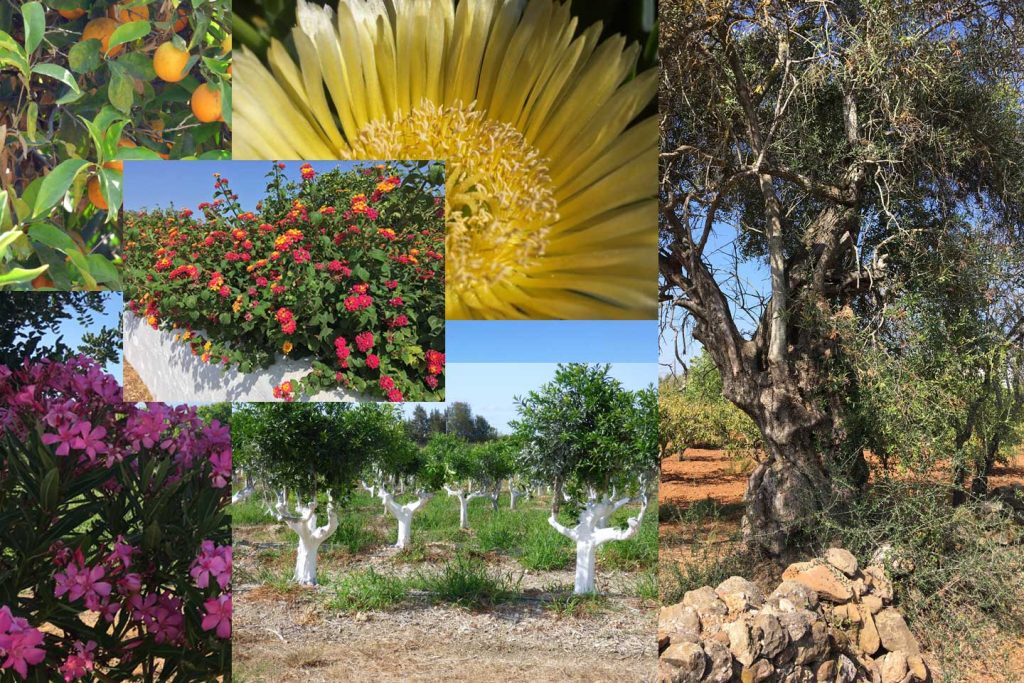
Regarding flora, I see trees: fig-trees, carob trees, almond trees, pomegranate trees, olive trees and orange trees. I see vineyards. I see the Umbrella (or Stone) Pine, which is one of the few pine trees that can withstand the difficult conditions close to the coast (wind and salt)
There are wildflowers, there are orchids, there are cacti. If you know your plants, you’ll see jacaranda, wild lilies, peonies and narcissus, oleander and bougainvillea. In spring, and all the way through to summer, you’ll see a surprising amount of colour.
In fact, everything about the flora and fauna of the Eastern Algarve is surprising! Come and have a look!
Weather in the Eastern Algarve
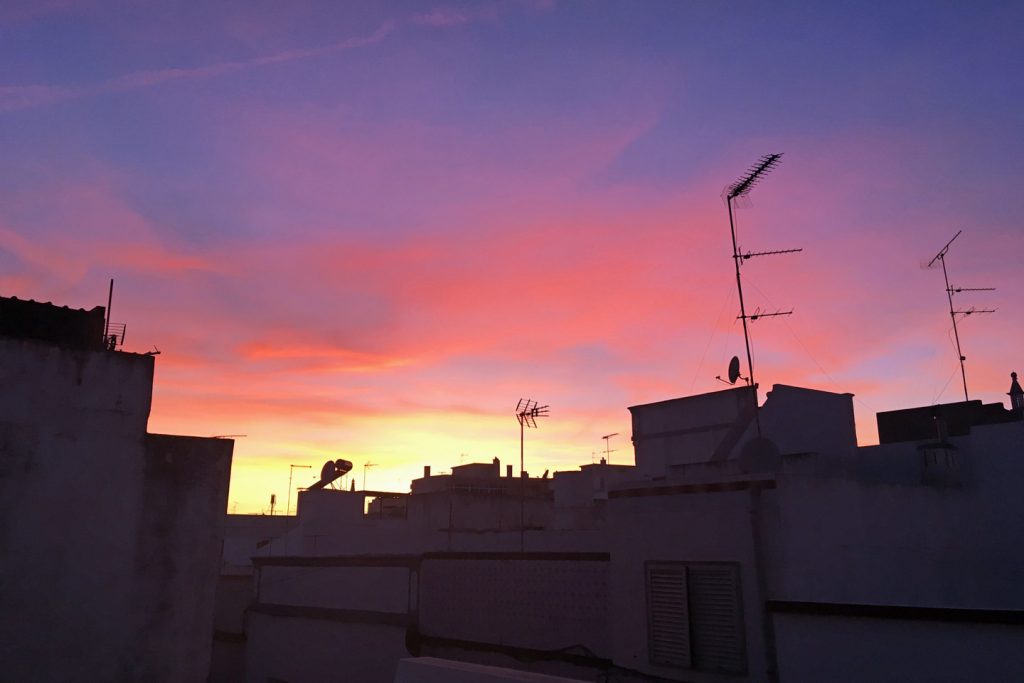
The Eastern Algarve benefits from a Mediterranean climate according to the Met Office, with ‘long, warm and dry summers and very mild winters’, receiving more sun each year than California. In fact, the Eastern Algarve receives more than 3000 hours of sun each year and 300 sunny days.
If anything, the Eastern Algarve is slightly warmer and drier than the Western Algarve, due to the influence of the Atlantic on the latter, although if you move inland in the west, it can be hotter and drier, often with a risk of forest fires.
Spring
Spring is a time of warmth with the occasional shower, and a great time to enjoy the food and culture without too much heat and without the crowds. If you enjoy walking, then this is probably the best time of year, with the flowers coming to life, and the rivers full.
Summer
If you like the sun, then the summer is for you, with long sunny days and virtually no rainfall over June/July/August. On the coast, you might find a gentle breeze, which is always welcome.
Autumn
As Autumn progresses, it stays warm, but the hours of daily sunshine decreases, and the rainfall quickly increases. Again it’s a good time for enjoying the food and culture, or walking through the Ria Formosa.
Winter
In winter, it will still feel warm in the sunlight, but cool out of the sun, especially in the evenings and early morning. Rainfall is at its highest in November and December.
Humidity
Don’t underestimate the impact of humidity over the cooler months. There is a dampness in the air, and you’ll find it difficult to dry towels etc.
Sea Temperature
The sea temperature in the Eastern Algarve is higher than in the west, due to the influence of the Mediterranean, probably too cold for swimming over the winter months and into spring (although I was swimming in the sea last February). Late spring, summer and into Autumn, the water temperature is good.
Click here for weather and sea temperature averages for the Eastern Algarve
Facilities for the Disabled
To be honest, I haven’t found much in the way of disabled facilities here.
There are a few disabled parking spaces available, and the lifeguards on some of the beaches (eg Fuseta) have a special trolley that helps less able members of the public to enter the water safely, without having to struggle across the sand.
Apart from that though, it’s not great.
Pavements tend to be uneven or non-existent, and some places quite hilly (eg Tavira, Fuseta). Having said that, once you get nearer to water, things seem to improve.
In Villa Real de Santo Antonio, that is certainly the case. If you want to wander along the banks of the Guadiana – it’s flat and easily accessible, as is the area alongside the Gilao in Tavira. In Olhao, the road and pavements along the front have been rebuilt, which is a great improvement. In Monte Gordo and Fuseta, you’ll find a wooden boardwalk running along the top of the beach, which makes things much easier.
Where I live in Fuseta, I’ve noticed that few locals use wheelchairs, at least not ones that they have to push themselves. They all seem to use motorised wheelchairs or mobility scooters, and these they ride on the road.
Shops are often small and cramped with a step up to go through the door, which doesn’t make things easy. But at least most restaurants and bars have outside seating, as well as table service.
Public transport isn’t great either, with the trains tending to have a large gap and step down to get off the train and on to the platform.
Having said all this, the people are great.
We have a Special Needs daughter, and she has never been made to feel out of place. She can be quite destructive when the mood takes her and eating can be rather messy, but everyone we have encountered has been really helpful and understanding.
I think if you have a disability, you’ll find someone to help you.
For example, there’s an old gent in Fuseta who’s blind. You often see the local waiters taking him to another bar or restaurant when he fancies a change.
The people here are good people.
There are also some services available if you need support whilst here:
Centre Algarve caters for families with a child that has Special needs, offering accommodation and facilities such as a Sensory room, a pool, animal experiences and so on.
Algarve Health and Social Care offer Nursing care, respite, community care, social care, psychotherapy and mobility aid hire. With our Special Needs daughter, they have been invaluable. I highly recommend them!
The 9 Best Things to Do in the Eastern Algarve
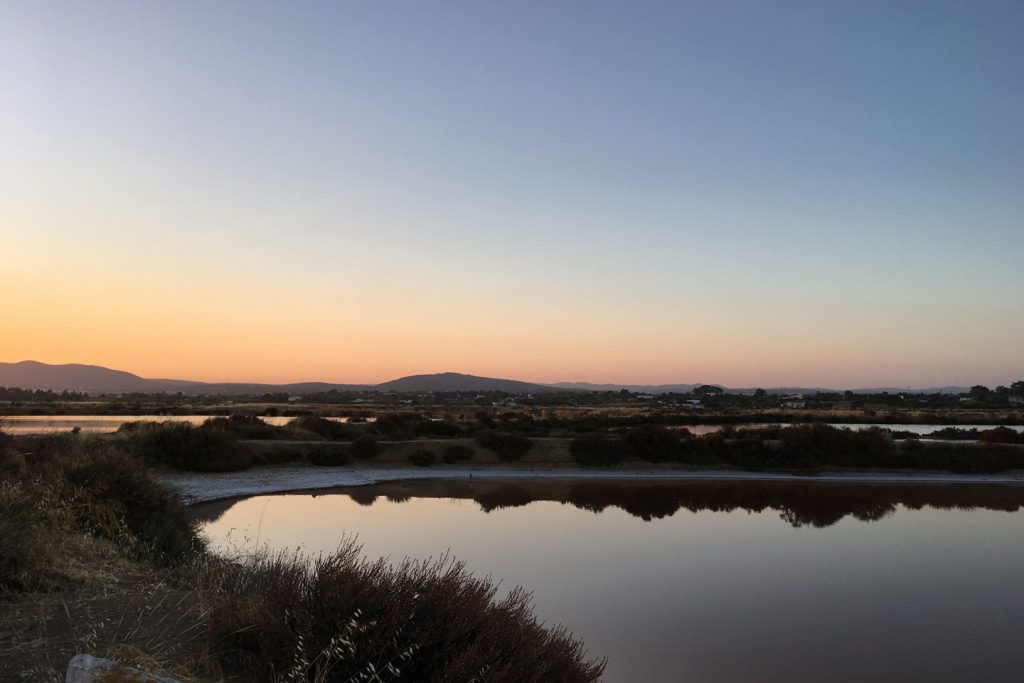
When considering the delights of Portugal, the Eastern Algarve is often overlooked.
Why? I’m not really sure.
It has some of the best beaches in the world, great weather and wonderful food – which on the whole is inexpensive.
It has a rich history and culture, and some great architecture. The people are friendly. The crime rate is relatively low. There are some lovely walks and a great cycle path (the Ecovia).
On top of that, it really isn’t crowded.
Even in summer, if you’re willing to walk a little way, you’ll find you have the beach to yourself.
So what are the best things to do in the Eastern Algarve?

